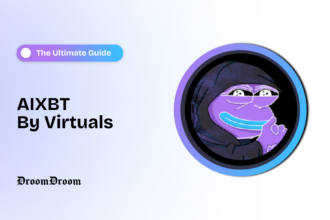Independent art is on the verge of a big transformation, thanks to the capabilities of the blockchain in empowering emerging artists. One of the blockchain’s highlights is enabling art creation and monetization to transcend traditional boundaries.
- Role of Blockchain in Empowering Emerging Artists
- Eliminating Barriers to Entry through Tokenization and Fractionalization
- Provenance Details are Transparent on the Blockchain for all Investors
- Ability to Accrue Earnings through Royalties/Secondary Sales
- Empowering Emerging Artists to Build Better Fan Engagement
- Democratized Ownership and Sense of Community
- Wider Pool of Capable of Investors
- Conclusion
To empower emerging artists in today’s world, once has to innovative models embracing the benefits of the blockchain such as transparency, security, data accessibility, and decentralization. This will enable emerging artists from anywhere to tackle questions of provenance, valuation, ownership, transparency, copyright and authenticity.
The art sector is notoriously centralized. As a result, it has become so difficult for emerging artists and investors of art to participate in art given that traditional gatekeepers control almost every facet of the investment process. Again, good art is extremely expensive to sometimes cost over $1 million. Therefore it seems unbelievable that the average ‘wannabe’ can invest in a Picasso or Leonardo Da Vinci art if they want to.
With the rise of Artfi, a blue-chip art investment marketplace, it has become surprisingly possible to put your money in a multi-million dollar piece like Joan Miro’s 1927 Peinture (Femme au Chapeau Rouge) which is going for $28.7 million at Sotheby’s.
Role of Blockchain in Empowering Emerging Artists
Today, fine art creators face 5 major problems, stiff competition from other artists, demand is not driven by need but by luxury, the business is heavily rigged against less-known emerging creators, complicated process of consigning your art piece to a gallery or auction, and finally, the art business depends on not creating hundreds of thousands of pieces in a lifetime but a few valuable ones which should often command a premium price tag.
When speaking about his creation process, Sacha Jafri whose work, the Six Elements Collection will feature on the Artfi Marketplace says his paintings start from a meditative state where he’s often unaware of his surroundings. According to the artist, he has to open himself up to a stream of pure emotions which he represents on a canvas.
It takes an overwhelming amount of thought-process to build a premium art piece, and selling it for peanuts is the last thing on the artist’s mind. For an artist who has just started and is yet to build a name for themselves, getting premium prices for their creations can be tough.
Artfi wants to make the business smooth for artists from all walks of life. We will discuss the solutions Artfi is building on the sections that follow.
The company has implemented blockchain technology to tokenize art and make it accessible to retail investors.
By doing so, the company’s mission is to tokenize as much high-value artworks and make it possible for investors with as little as a few hundreds or thousands to invest in pieces of perfect provenance.
For a long time, the blue-chip art market has exclusively been under the control of ultra-wealthy private companies and rich investors. This made it very difficult for average investors who value and treasure art to invest in the business and perhaps even support a few artists.
With the Artfi Marketplace, a new crop of retail investments will flow into the art businesses and open up new markets for emerging artists who are serious with the business of creating amazing works.
The platform also unlocks infinite visibility for emerging artists whose artworks will be listed on Artfi. One of the first things an artist wants when they are starting and growing is a platform to showcase their work.
Artfi is more than that, the platform gives the artist an opportunity to showcase their work, sell pieces for premium prices, visibility across retail investors in different parts of the world and access to a community of enthusiasts who are passionate with art.
Empowering emerging artists is not a single-approach process and must involve different components coming together to pave the way towards revolutionizing modern art. Over the years, many things have changed including how business is done and how people indulge in global trade. Many technology advancements have faced out old models of doing business but these changes have somewhat been invisible to the highly privatized art industry.
Despite having a staggering $1.7 trillion, the majority of the world is locked out regardless of having the urge to partake in art investments. Even in an age where the web has reduced the world into a global village, where an artist from a developing nation should sell their art at a marketplace in New York or Dubai at the comfort of their laptops or mobile phones; the art sector has continued to serve only the few ultra-wealthy. It is this exclusivity of the art business that the founder and CEO of Artfi embarked to solve when he started the company.
Below we will highlight steps to empowering emerging artists by revolutionising art collection:
Eliminating Barriers to Entry through Tokenization and Fractionalization
By fractionalizing the artpiece into several convenient units through the blockchain, anyone with as low as a few thousand dollars can own an ultra-expensive art, and sell it when it appreciates in price.
Provenance Details are Transparent on the Blockchain for all Investors
Non fungible tokens are particularly essential in making Artfi’s dream possible. One of the impacts of NFTs is enabling fans to directly support their favorite creators.
We’ve seen this happen in the music industry where independent artists have built stronger communities and sustainable income streams by launching tokens.
Artfi’s implementation of NFTs is revolutionary and unique. The marketplace identifies highly lucrative blue-chip art that has impeccable provenance, purchase the art and goes fractionalizes the piece on the blockchain.
Anyone from anywhere in the world can access the art as an NFT collection of fractional units, with each unit representing ownership in the physical art.
Ability to Accrue Earnings through Royalties/Secondary Sales
The founder of Artfi, Mr. Asif Kamal told DroomDroom that the biggest challenge with innovating art is combining several different elements to achieve accessibility. Already, creators are relying on two types of art NFTs to drive innovation in the art ecosystem, ownership-based and patronage-based NFTs.
In ownership-based NFTs, the ownership of the token is tied to the intellectual rights behind the art piece, including royalties. On the other hand, patronage-based NFTs do not grant ownership rights but rather, are an indication of fans’ support to an artist.
Artfi is building ownership-based NFTs tied to actual blue-chip art so that when you own a Picasso art NFT, you are owning the actual art and directly entitled to accruing royalties/revenue, be it a primary sale or secondary sales.
Empowering Emerging Artists to Build Better Fan Engagement
One thing that many artists agree on about Web3 and its contribution to empowering emerging artists is its ability to build better engagement between fans and their favorite artists. Fractionalizing the art and democratizing investing power is one of the powerful features of Art NFTs on marketplaces like Artfi.
Several creators have admitted the ripple effect of airdropping non fungible tokens to thousands of fans, how thanks to these airdrops, average fans turned into subscribers, loyal supporters and finally into a vibrant community.
Democratized Ownership and Sense of Community
Foundational to human nature is the alluring desire to own personal items that signify artistic merit, luxury or personal achievements. Imagine now being able to own that and show it off through the blockchain, and as if that’s not enough, earning interest or royalties as the items appreciate in value.
Knowing that you own a piece of luxurious art and having your signature represented digitally also brings you closer to the artist. It makes those who own the art to belong to a community of art lovers who are willing to accumulate more pieces and even build their portfolios.
The artist on the other hand is able to foster community around their creations, expand their revenue streams and gain access to a highly liquid market.
Wider Pool of Capable of Investors
Democratizing the art also means the wider the pool of investors capable of putting their money into an art piece.
In other words, the art sector which has spent decades under the control of a few ultra-rich private companies is now accessible to any investor with as low as a few thousand dollars to own a piece of a Monet.
Conclusion
Traditionally, art collections were for extremely rich people. Being one of the most conservative industries in the world, the art sector has been under the control of big and old auction houses such as Sotheby and Christie’s.
In the modern day, creators from all sectors including artists, musicians, writers are yearning to innovate their industries so that they can have more control over their art business.
Artfi is bringing accessibility to the industry so that anyone that wants a piece of Picasso, Bacon, Duchamp, Bourgeois, Sam Francis, or Dubuffet can have it without undertaking the complex traditional route, which by now has become faced out by technology in empowering emerging artists.
By breaking a single artwork into thousands of encrypted certificates to represent ownership of shares, investors can buy these certificates and subsequently own a share of the artwork. If they want to sell their share, they are free to do so on the Artfi marketplace. This will also make it easier for artists to sell their art now that they will have access to a transparent platform, adequate liquidity and a global market at the click of a button.



















